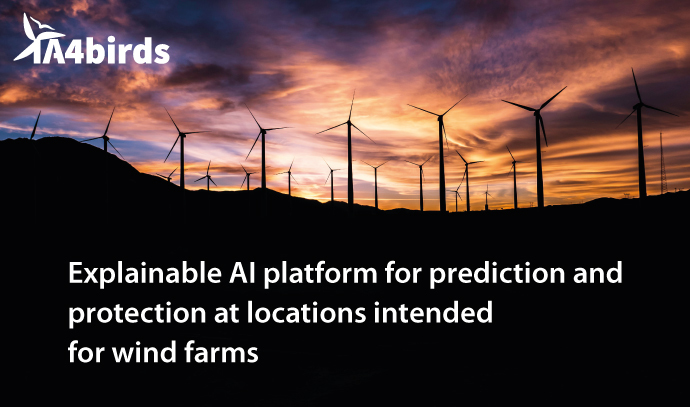AIR Institute presents IA4Birds in collaboration with the Spanish Ministry for Ecological Transition
Renewable energies offer a series of benefits that have been widely demonstrated at multiple levels. Although this is less discussed and less well known, they also entail certain risks and disadvantages for biodiversity which, despite their complexity, must be minimised at all costs.
One of these consequences is the serious threat posed to a large number of bird species in Spain due to the positioning of wind farms. On the other hand, it is important to maintain investment in wind energy, as it is the energy that produces the most electricity in our country, exceeding, according to data from the Spanish Wind Energy Association, 23% of demand coverage in 2021. Therefore, the objective must be to increase investment in wind farms, without neglecting the importance of following a series of strategies to preserve biodiversity.
Is it possible for these two benefits to coexist? This is the aim of IA4Birds, a platform based on artificial intelligence that uses audiovisual devices to monitor bird populations, so that threats and risks can be prevented, and it can be decided whether or not a particular site is suitable for the construction of a wind farm. This could considerably reduce the high rate of bird mortality caused by collisions with wind turbines, as well as other associated risks.

Beyond the monitoring device, the idea of AIR Institute, which is the driving force behind the project, is to create a database and compile different sources of information on a single platform, so that developers can find suitable locations and consult relevant information. Thus, in the future, with the collaboration of wind farms, it would not only be a matter of determining where to locate new wind farms, but also of improving the conditions at existing ones.
IA4Birds, currently under development, is supported by the Biodiversity Foundation of the Ministry for Ecological Transition and the Demographic Challenge (MITECO) within the framework of the Recovery, Transformation and Resilience Plan (PRTR), funded by the European Union - NextGenerationEU. The fact that AIR Institute, located in Valladolid and Salamanca, is responsible for its implementation, has a geographical and practical relevance, since, according to data from the Spanish Wind Energy Association, Castilla y León is the region with the highest number of wind farms and capacity of installed wind turbines.